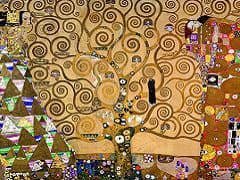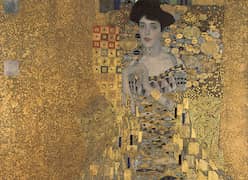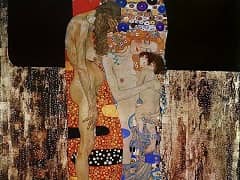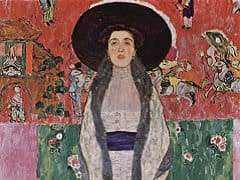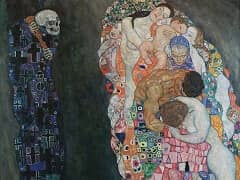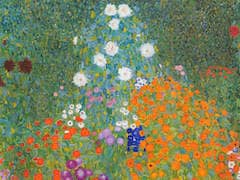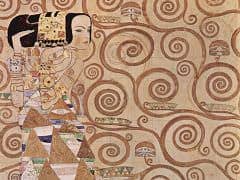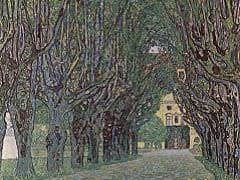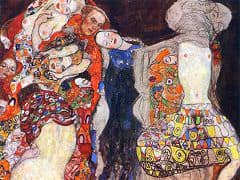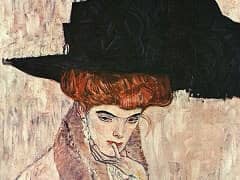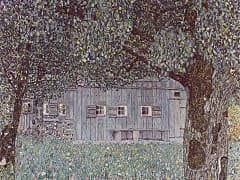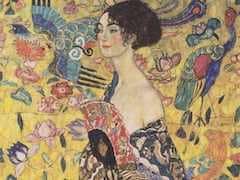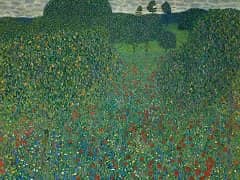Beech Forest, 1903 by Gustav Klimt
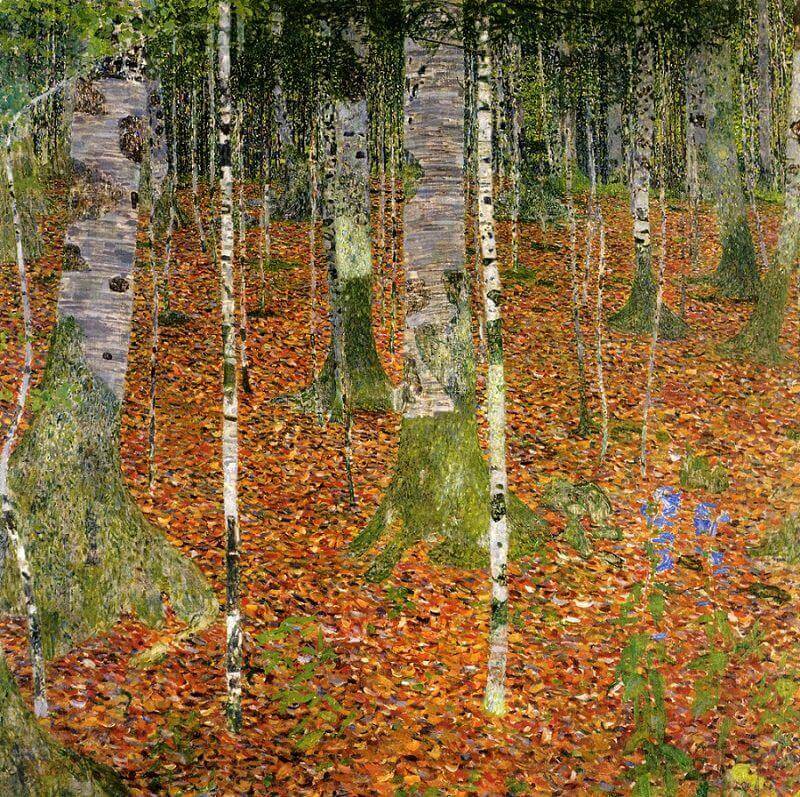
Klimt's beautiful delicate brushwork captures this eerie scene, a profusion of energy held in place by his sheer technical professionalism. Here, he has perfected his own adaptation of
Neo-Impressionism and Pointillism esthetics, resulting in the play of superb oppositional tensions across the painted surface.
A densely textured meshing of dots creates the golden carpet, as though the beeches' bronzed fall foliage has fallen from the hidden tree tops. It is an explosion of separated atoms patterned
into a unified mass. Crossing these dots are the striating horizontal lines of the tree bark. Klimt was undoubtedly fascinated that this series of horizontals, piled up into a columnar structure,
created the vertical lines of the trees. The resulting tension is further exaggerated by the deployment of the two powerful polarized color blocks of red and green, whose oppositional forces
accentuate the wood's stillness.
This color tension also projects the trees dynamically out of the landscape so that they loom up translucently. Counterpoising the red floor, the trees ultimately blend into the vibrant green background,


